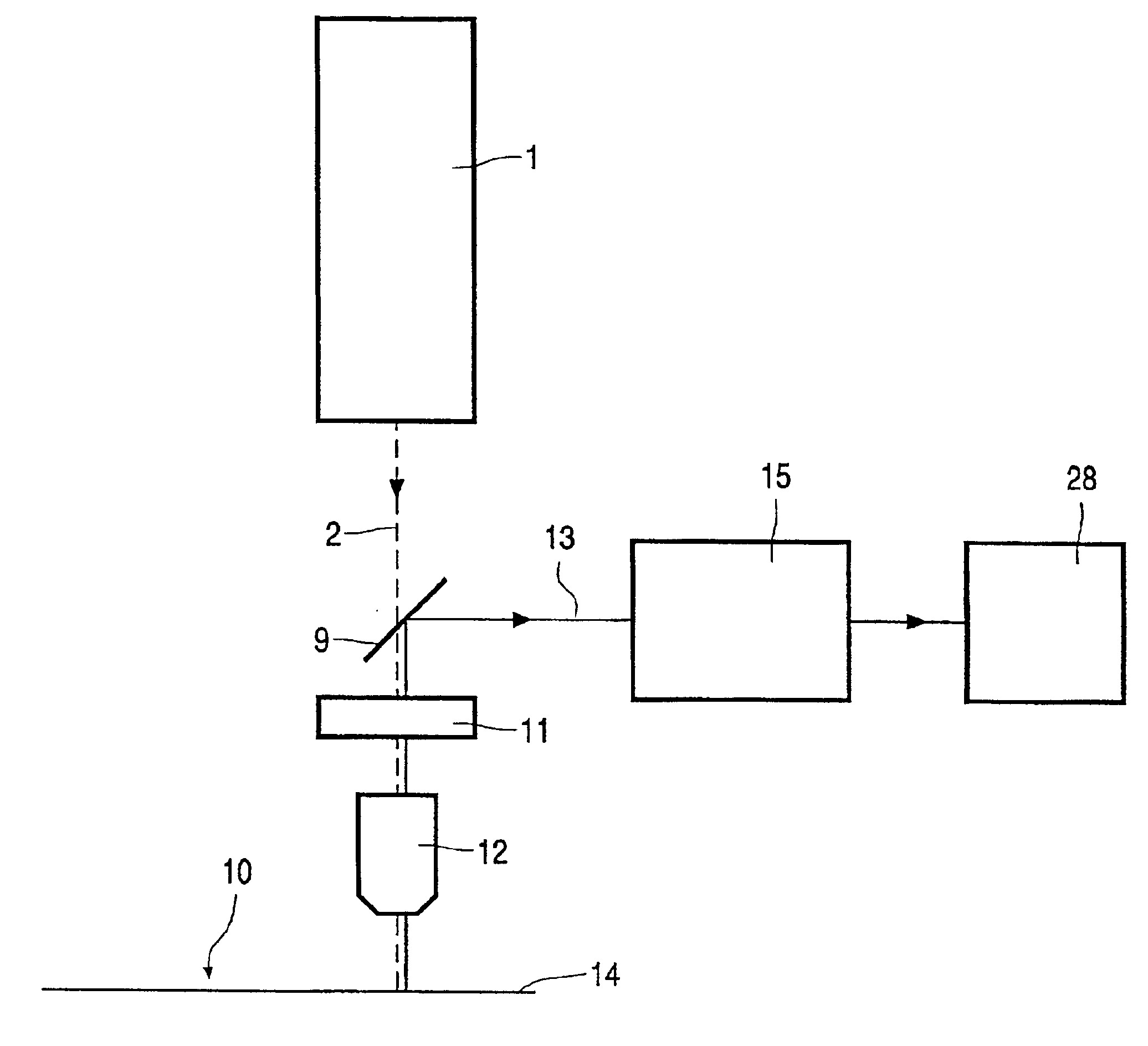Inspection of surfaces
a technology for inspecting surfaces and surfaces, applied in the direction of microscopes, optical elements, instruments, etc., can solve the problems of insufficient resolution of conductor tracks, time-consuming measurement, and insufficient fineness of resolution for microstructures with conductor tracks, so as to improve the measurement of contamination or damage on surfaces.
- Summary
- Abstract
- Description
- Claims
- Application Information
AI Technical Summary
Benefits of technology
Problems solved by technology
Method used
Image
Examples
Embodiment Construction
[0018]The embodiment of the device that is shown in FIG. 1 includes a light source 1 which is constructed as a laser light source and hence produces a high intensity. The laser light source 1 is provided with an optical resonator 3 which includes, for example mirrors 4, 5 that are adjustable relative to one another and are situated at a distance L from one another in the beam path of an emitted light beam 2. The mirrors 4, 5 are constructed as plane mirrors or as concave mirrors for ease of adjustment. Between these mirrors a standing wave is formed when the resonance condition is satisfied; this standing wave can be classified as a TEMmnp, where the term TEM stands for transversal electromagnetic moment and the index m denotes the number of zero positions in the x direction, n is the number of zero positions in the y direction and p is the number of nodes along the length L of the resonator axis (of the order of magnitude of 106 in the case of visible light and when the resonator h...
PUM
 Login to View More
Login to View More Abstract
Description
Claims
Application Information
 Login to View More
Login to View More - R&D
- Intellectual Property
- Life Sciences
- Materials
- Tech Scout
- Unparalleled Data Quality
- Higher Quality Content
- 60% Fewer Hallucinations
Browse by: Latest US Patents, China's latest patents, Technical Efficacy Thesaurus, Application Domain, Technology Topic, Popular Technical Reports.
© 2025 PatSnap. All rights reserved.Legal|Privacy policy|Modern Slavery Act Transparency Statement|Sitemap|About US| Contact US: help@patsnap.com



